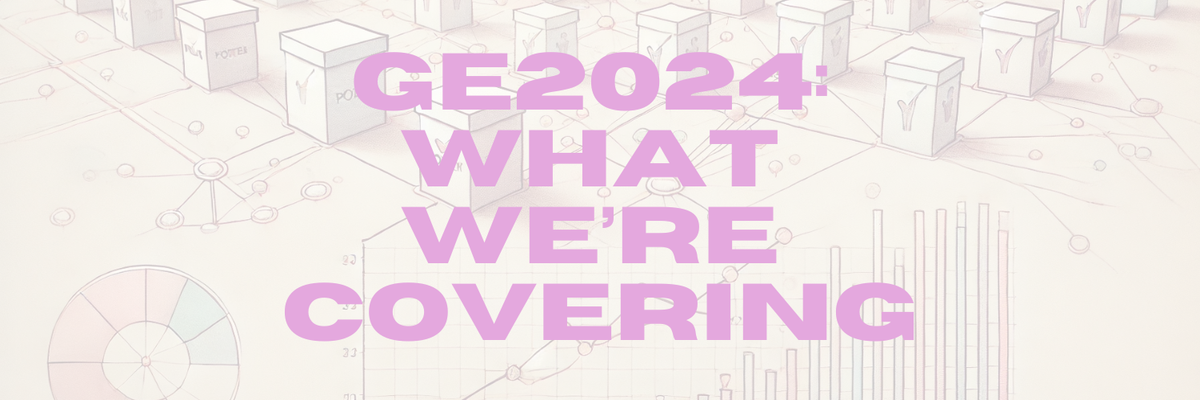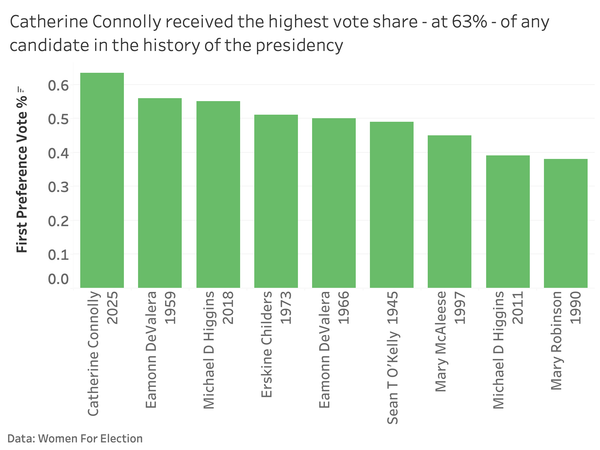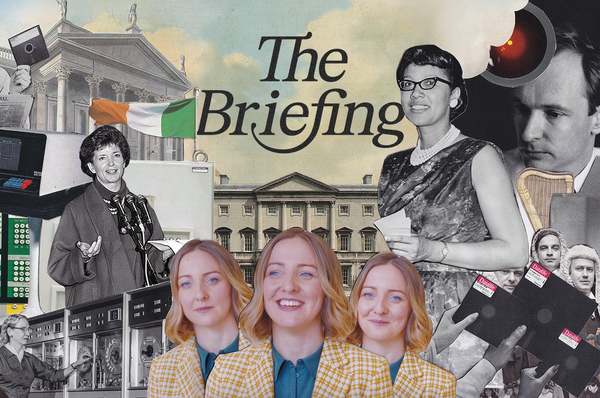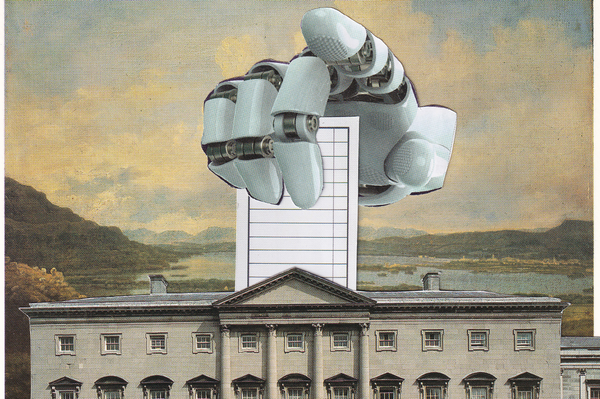The Shadow Campaign has Begun, and Deepfake Vs. Cheapfake
Revealing "shadow campaigns" and how AI-driven “deepfake” tools are reshaping political messaging and authenticity.

The date may be uncertain, but the shadow campaign is well underway. So what stories are the parties trying to tell about themselves?
Plus: we play our first game of Deepfake vs. Cheapfake
{PS: if you enjoy this newsletter - consider sharing it with someone who might like it too. The can sign up here:}
September was all about housing, housing, housing
Sinn Fein had a spike in ad spend in September, when they were pushing their "A home of your own" strategy. They spent over €8k on a single Google ad, which would have shown at the top of search results (Google don't give details on the exact targeting).
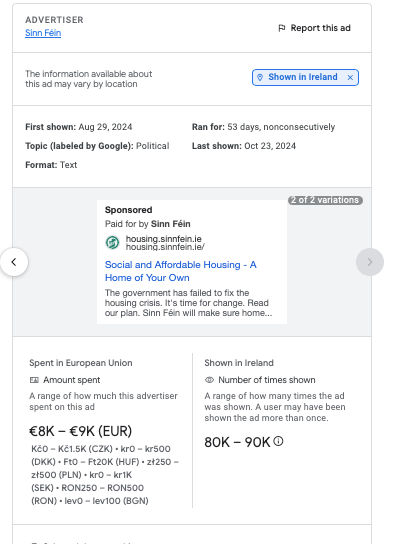
They ran a ton of ads on Facebook and Instagram too, hammering home the key phrase "an ambitious, comprehensive and costed roadmap" in at ads with at least 7 different video / images, like this one:

Fianna Fáil responded with tailored ads targeting each local authority area, with local stats detailing how many social homes were built, how many people received the "rent tax credit" etc. in each area. Here is the version of the ad that was shown in Waterford - it reached about 3.5k people, over half of them under 35.
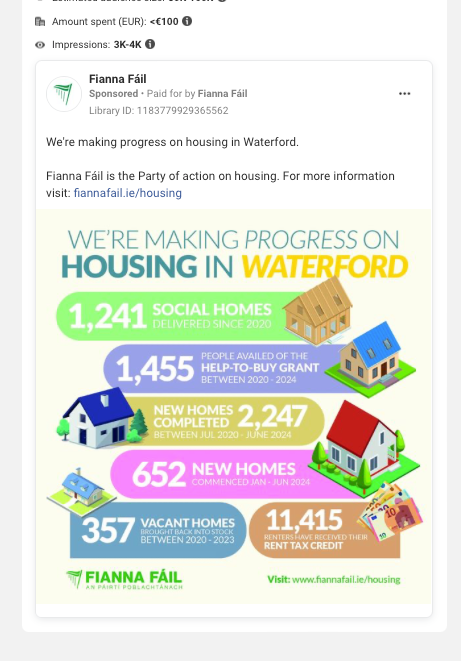
October put "money pack in your pocket"
There is no mention of housing in Fine Gael's paid political content - they really, really want you to notice that budget money burning a hole in your pocket.
Like Fianna Fáil they have gone for personalised infographics, but this time targeting based on how many Euros you got. Take this ad, which reached almost exclusively those reaching or at pension age.
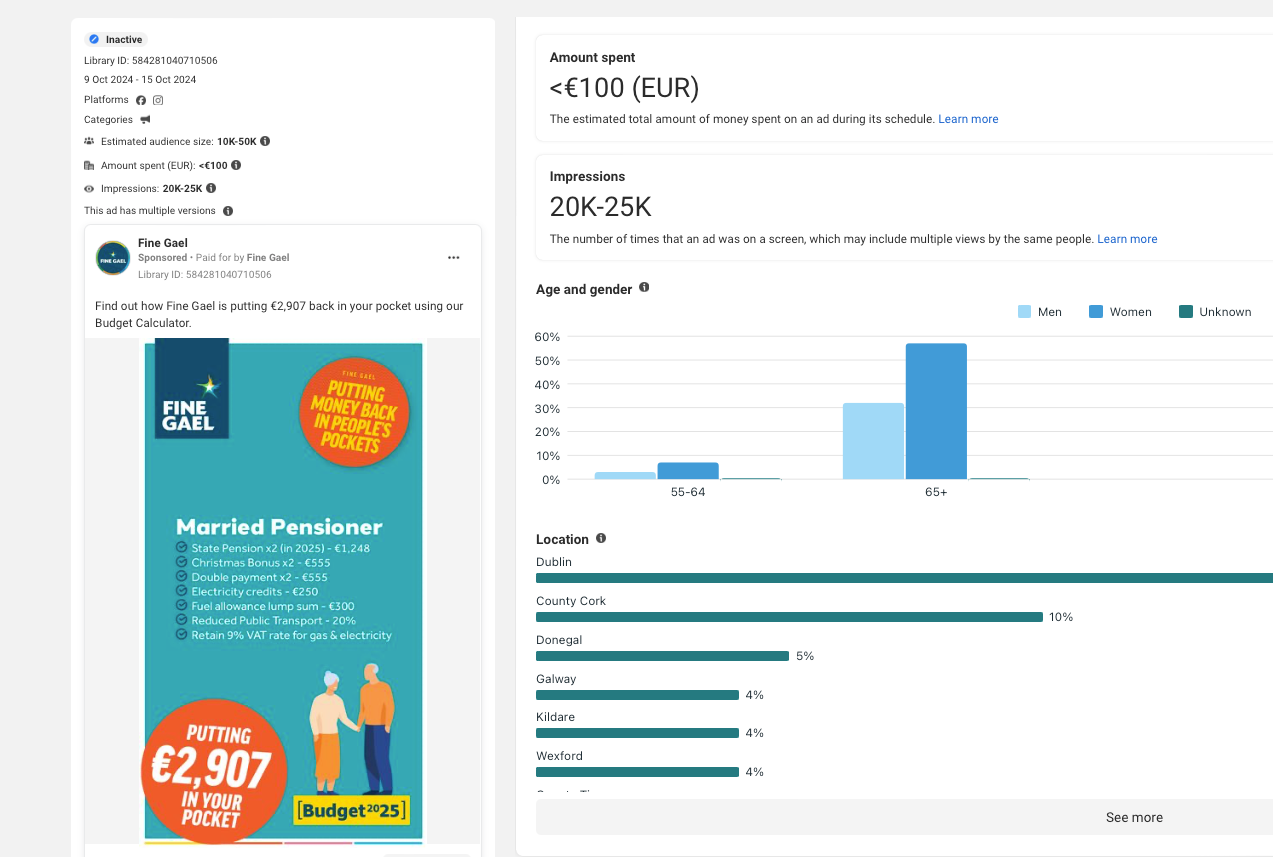
Versus this ad, targeted at the young, single renter.
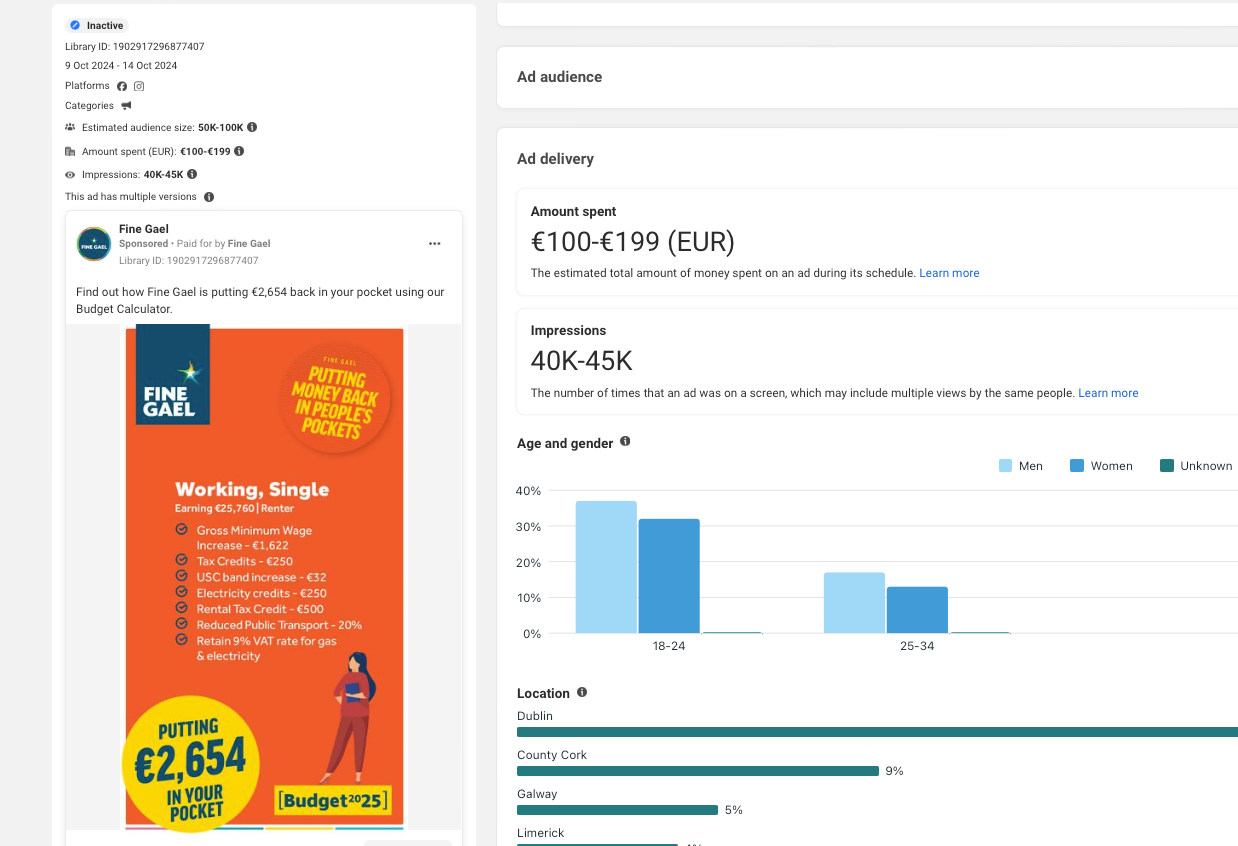
More ads pushed a calculator to see your own personal benefit from Budget 2025.
This highly individualised narrative contrasts with Fianna Fáil. They ran a few ads pushing giveaways, but tended to emphasise the overall social impact. Take for example this ad about the extension of free schoolbooks to second level - which highlights the number of students across the country who will benefit.

Fianna Fáil also emphasised some of the new health investments - like these two examples of the cancer and HRT strategies. Whether this is down to the party wanting to present itself as less individualistic - or the portfolios the party holds in Cabinet - is an open question.
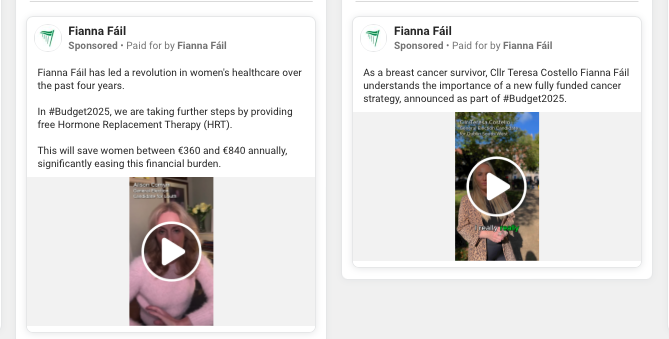
"What has this Government got against rural Ireland"
Sinn Féin's response to the budget pushed their line of a "wasted opportunity". While some focused on delays to carers benefit, a handful focused on something that we might see the party push in the election: rural tensions over climate policies.
The opening line of this ad, fro example - which Sinn Fein spent over €3k on, and reached 800k people, mostly younger men - is "What has this Government got against rural Ireland?"
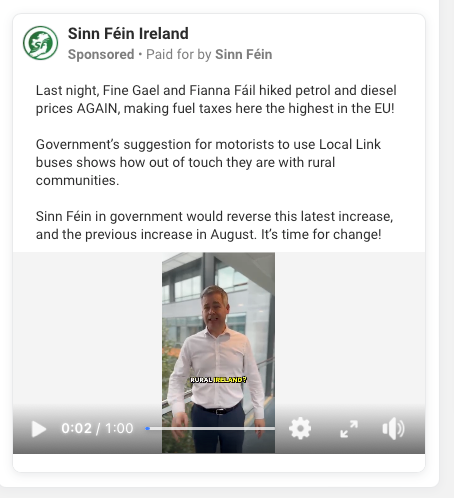
And lastly: Deepfake vs Cheapfake?
There are 3 scenarios, in my opinion, when it comes to thinking about generative AI & elections; that it makes campaigns more creative and polished (something I covered in a feature for the Business Post in the summer); that it is used to deceive or grift via, for example, deepfakes; or that it is deployed in a super conspicuous way to attract attention, via a cheapfakes; the "pick me" of electioneering.
Used well, Gen AI should be seamless - as Cllr Cat O’Driscoll explains in that Business Post piece, it can be, for example, a good "editing and producing tool” for social media content.
“I’d type in a paragraph about something I want to make an Instagram Reel on, like footpath parking. I'd ask ChatGPT – the free version – to make it a Reel script which I’d then adapt to my own voice. It gives production notes which are useful... it saved loads of time and I always edited it to my voice.”
Sinn Fein ran an ad in early September that used generated video that I think also falls into this category; it was very obviously computer generated (giving early CGI vibes) with the camera panning from a cramped flat through to a new home.

They didn't put a lot of money behind it - about €300 - and mostly targeted it at older people. I get the sense it was them trying something out - which is again where I think Gen AI can help - you have a concept, you don't want to spend a ton of money, so see what happens.
This, on the other hand is bait:
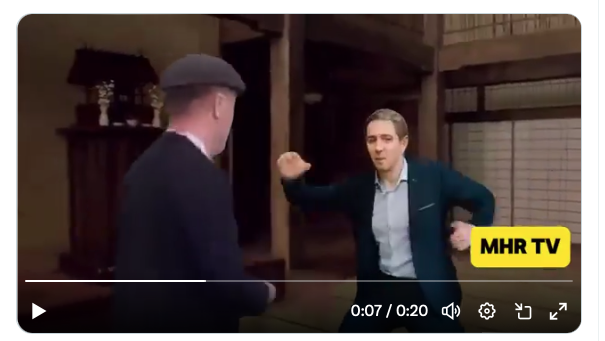
Let me know what you think
If you made it this far, do hit reply and let me know what you think. This is the first of our #GE2024 series (more details on our plans here). I will be back soon with a focus on money, likely at the weekend.
ICYMI
